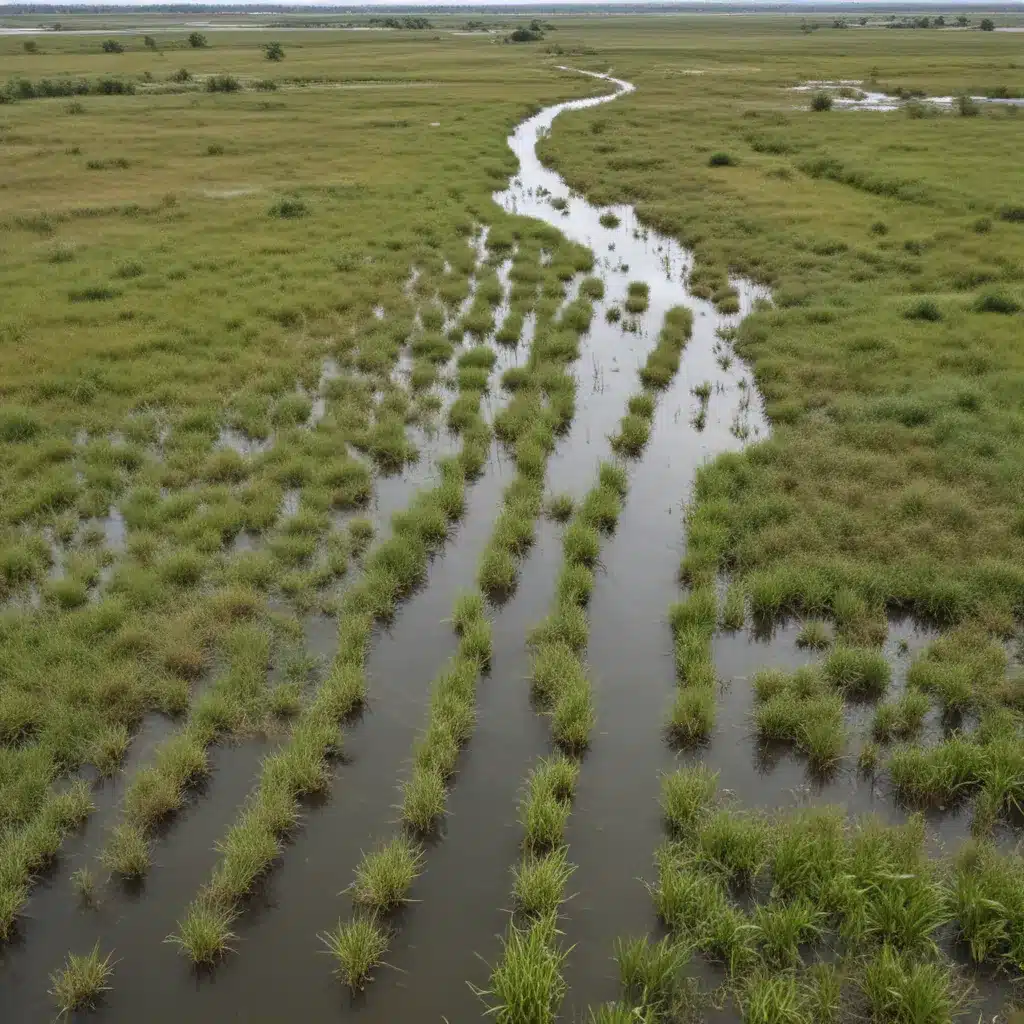
Flooding poses a significant threat to communities around the world, requiring comprehensive strategies to mitigate risks and safeguard lives and infrastructure. In our 15 years installing… While traditional grey infrastructure like levees and dams can provide critical flood protection, there is a growing recognition of the immense potential of managed wetland systems to enhance flood control capabilities while also optimizing a wide range of valuable ecosystem services.
Now, this might seem counterintuitive…
Wetlands are natural sponges that can absorb and store vast volumes of floodwaters, reducing downstream impacts. By strategically restoring, creating, and managing these aquatic habitats, flood control specialists can leverage their unique hydrological functions to enhance overall resilience. Importantly, wetlands also deliver a host of co-benefits, from improved water quality and groundwater recharge to rich wildlife habitat and recreational opportunities.
In this comprehensive article, we’ll explore how flood control through managed wetland systems can be optimized to balance social, economic, and ecological priorities. We’ll delve into the latest research, best practices, and innovative approaches that are transforming the way communities prepare for and respond to flood events.
Flood Risk Assessment
Effective flood control begins with a thorough understanding of the risks. Hydrological modeling and vulnerability assessment techniques are essential tools for evaluating flood hazards, predicting inundation patterns, and identifying high-risk areas. By integrating watershed-scale analyses with detailed floodplain mapping, specialists can develop a comprehensive picture of flood risks and prioritize mitigation strategies accordingly.
Adopting advanced modeling software and conducting regular scenario-based simulations can help flood control practitioners stay ahead of evolving threats, such as those posed by climate change. Moreover, integrating these assessments with community engagement and data-driven emergency planning is crucial for building resilience at the local level.
Flood Mitigation Strategies
Alongside traditional levee design and construction, flood control specialists are increasingly turning to nature-based solutions that harness the power of wetlands and other aquatic habitats. Floodplain management approaches, such as strategic land use planning and conservation easements, can preserve and restore these vital ecosystems, providing a multi-functional buffer against flood risks.
The strategic placement of retention and detention basins within watersheds can also significantly enhance flood control capabilities. These engineered wetlands and ponds not only attenuate peak flows but also facilitate groundwater recharge, sediment trapping, and water quality improvement – all essential ecosystem services.
Managed Wetland Systems
At the heart of this integrated approach to flood control lies the concept of managed wetland systems. By restoring, creating, and carefully managing these dynamic aquatic habitats, communities can leverage their natural flood mitigation functions while also optimizing a diverse suite of ecosystem services.
Wetland restoration and creation projects, informed by detailed hydrological assessments and habitat suitability analyses, can be strategically placed within watersheds to enhance water storage, infiltration, and flood buffering capacities. Careful management of water levels, vegetation, and wildlife can further optimize these ecosystems’ performance.
Wetland Functions
Wetlands are renowned for their ability to store, slow, and infiltrate floodwaters, reducing the magnitude and duration of downstream flooding. Their dense vegetation and complex microtopography create a natural “sponge” that can temporarily hold vast volumes of water, gradually releasing it over time. This hydrological regulation function is a cornerstone of their flood control capabilities.
In addition, wetlands excel at sediment and nutrient trapping, preventing the transport of pollutants and excess nutrients that can exacerbate water quality issues during flood events. The dense vegetation and slow-moving waters encourage the settlement of suspended solids, while the complex biogeochemical processes within these habitats transform and immobilize nutrients.
Wetlands also provide invaluable wildlife habitat, supporting a diverse array of flora and fauna. By preserving and restoring these ecosystems as part of a comprehensive flood control strategy, communities can safeguard critical biodiversity while enhancing the overall resilience of the landscape.
Storm Water Management
Integrating wetland systems into urban and suburban storm water management approaches can yield significant benefits. Green infrastructure solutions, such as constructed wetlands, bioswales, and permeable surfaces, can mimic the water storage and infiltration functions of natural wetlands, reducing peak flows and improving water quality.
Low-impact development strategies that maximize the use of these nature-based storm water controls can help communities manage flood risks in a more sustainable and ecologically-sensitive manner. By capturing and retaining storm water on-site, these approaches reduce the strain on traditional urban drainage systems and minimize the need for expensive grey infrastructure.
Emergency Flood Response
Even with comprehensive flood control measures in place, emergency response capabilities remain a critical component of community resilience. Early warning systems, coupled with detailed evacuation planning and accessible disaster relief operations, can save lives and minimize the impacts of flood events.
Wetland systems can play a valuable role in these emergency response efforts, providing natural staging areas for flood water storage and post-flood recovery activities. Assessing the damage, coordinating debris removal, and strategizing reconstruction efforts all benefit from the resilience and multi-functionality of managed wetland ecosystems.
Conclusion
As communities grapple with the growing threat of flooding, the integration of managed wetland systems into comprehensive flood control strategies offers a promising path forward. By optimizing the natural flood mitigation functions of these dynamic habitats, while also leveraging their diverse ecosystem services, flood control specialists can enhance overall community resilience in the face of evolving water-related challenges.
Through a holistic approach that combines advanced risk assessment, innovative mitigation techniques, and emergency preparedness, flood control professionals can help communities adapt and thrive in the face of an uncertain future. By placing managed wetland systems at the heart of this effort, we can unlock the full potential of nature-based solutions to safeguard lives, protect critical infrastructure, and foster vibrant, sustainable communities.
To learn more about the latest advancements in flood control through managed wetland systems, visit Flood Control 2015. Our team of experts is dedicated to providing cutting-edge research, practical guidance, and innovative solutions to help communities build resilience and prepare for the flood risks of tomorrow.
Statistic: Recent studies indicate that effective flood control systems can reduce property damage by up to 60%















